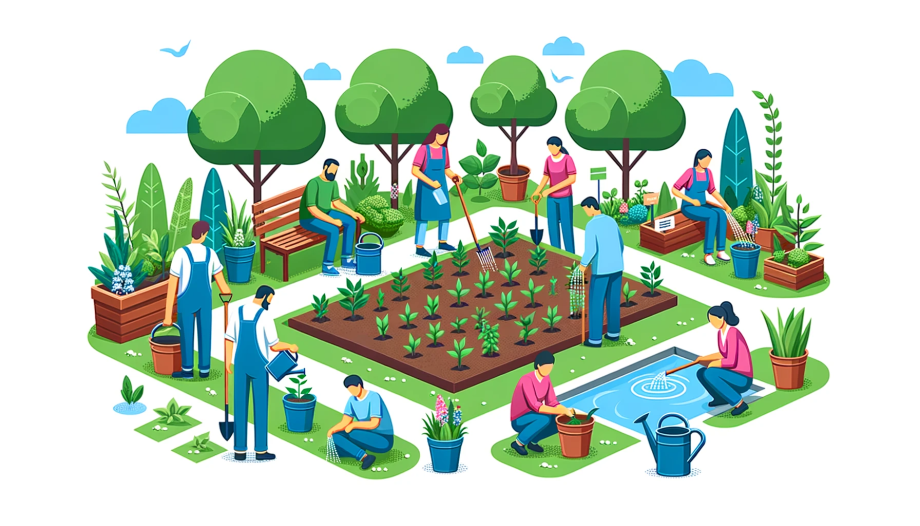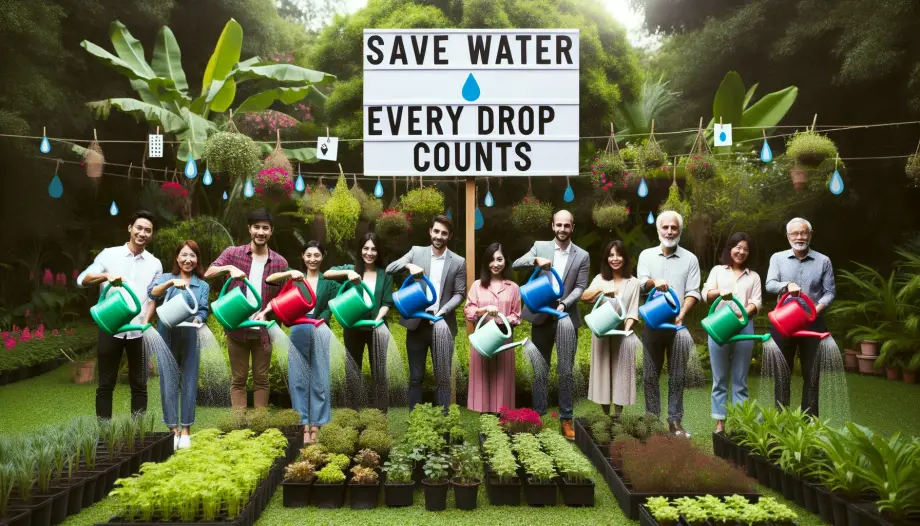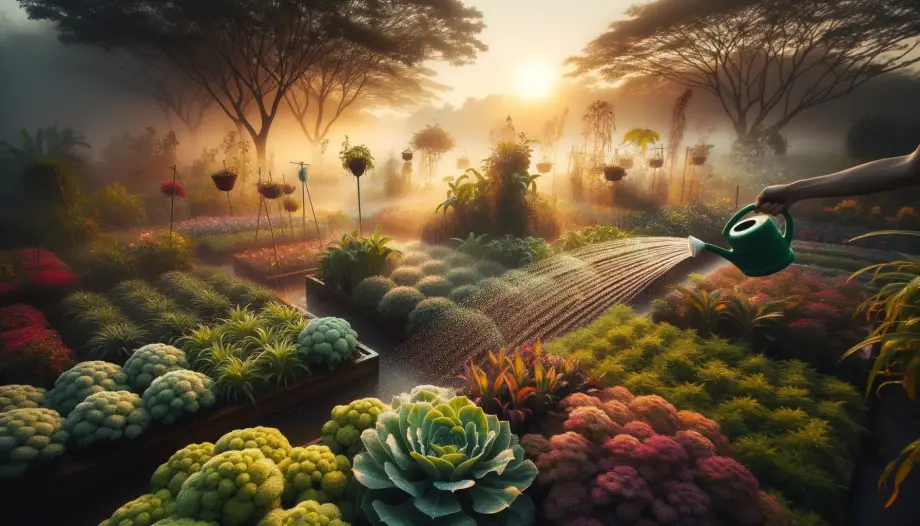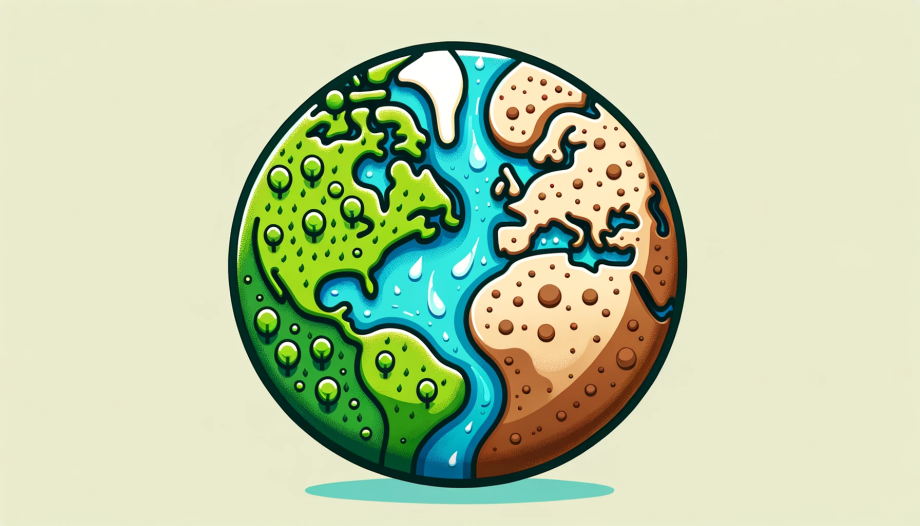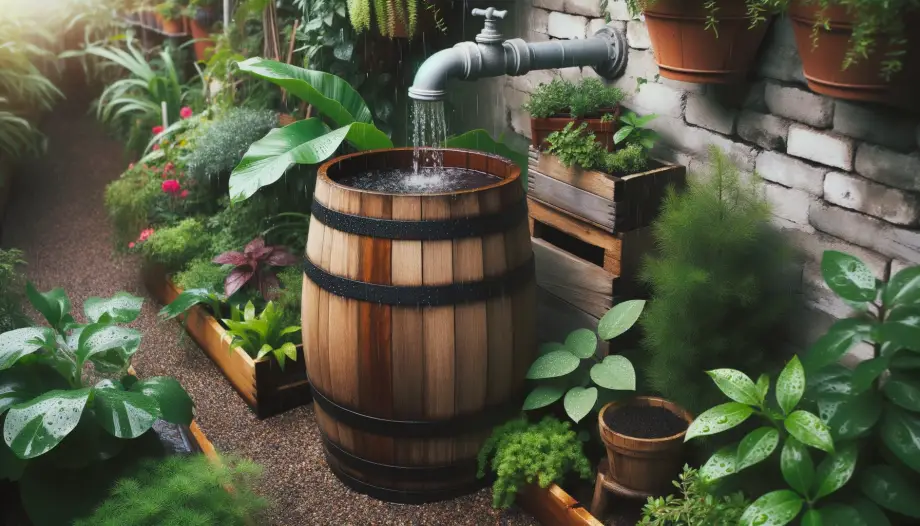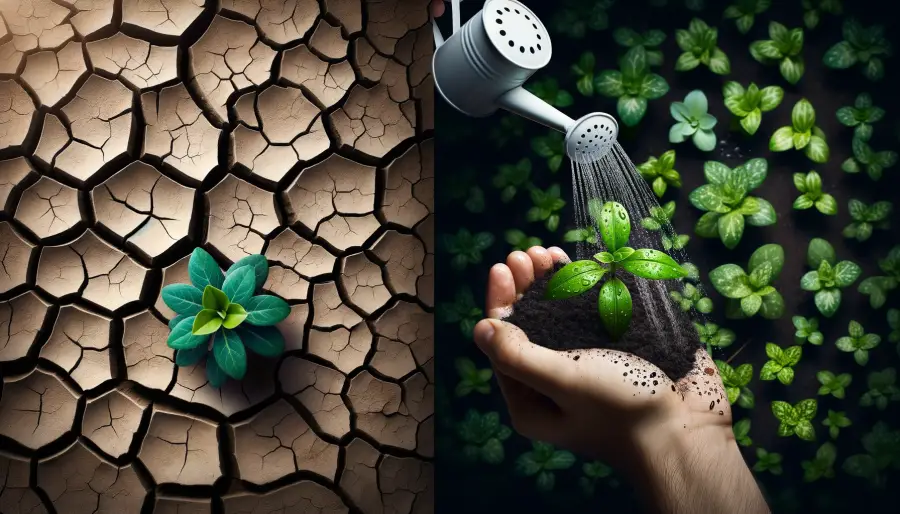
Dive into the depths of the importance of water conservation through our latest post. Discover how preserving water today shapes a sustainable, healthy tomorrow.
Water Conservation Key Takeaways:
- The importance of water conservation lies in ensuring a sustainable supply of fresh water for present and future generations.
- It plays a pivotal role in promoting public health, reducing energy consumption,
- It supports ecological balance by minimizing the impacts of water scarcity on natural habitats.
I. The Importance of Water Conservation
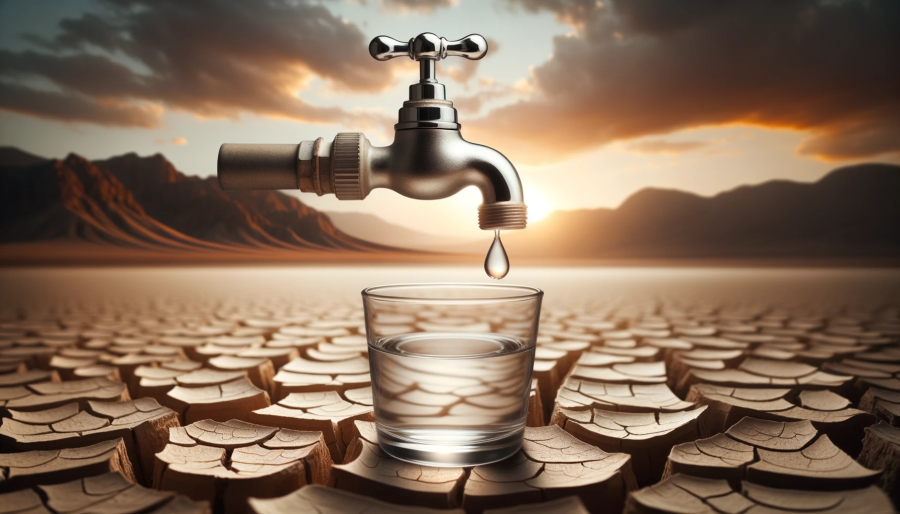
Discover how preserving water today shapes a sustainable, healthy tomorrow amidst growing concerns of water scarcity.
Water conservation is pivotal in safeguarding the finite freshwater resources on Earth.
Uncovering the essence of water conservation reveals a mission to safeguard our planet’s freshwater resources.
This endeavor transcends mere usage reduction, embedding itself in broader societal and environmental contexts.
Its importance stretches across various aspects of our lives and the environment, highlighting the need for collective efforts to preserve this precious resource for present and future generations.
2. Preservation of Freshwater Resources

The mantra of preserving freshwater resources echoes the urgency to mitigate water scarcity.
This proactive approach targets a sustainable equilibrium between human needs and ecological balance amidst an impending water crisis.
Aim to conserve the available freshwater resources on the planet:
Freshwater, a finite resource, is under continuous strain due to a burgeoning global population and escalating demands from agricultural, industrial, and domestic sectors.
The dire consequence of depletion accentuates the importance of conserving the available freshwater resources to thwart a looming water crisis.
Conservation Strategies: Safeguarding Water for Future Generations
Strategies towards conservation are not only a response to the immediate necessity but also include strategies towards conservation and sustainable water management practices to ensure the long-term availability of water for future generations.
In-depth discussions can be made on global water scarcity statistics, regions most affected, and the potential impacts if conservation measures are not adopted.
Strategies include beneficial reduction in water loss, use, and waste of resources:
A myriad of strategies exist to facilitate a beneficial reduction in water loss, use, and waste of resources.
These range from individual actions to systemic changes.
On a personal level, practices such as fixing leaks promptly, employing water-saving appliances, and mindful water usage in daily routines contribute significantly to conservation.
On a broader scale, policy implementations, improved water infrastructure, and promotion of water-efficient technologies play a crucial role.
Besides, education and awareness campaigns can foster a culture of conservation, enabling informed decisions and encouraging responsible water use.
3. Health and Sanitation
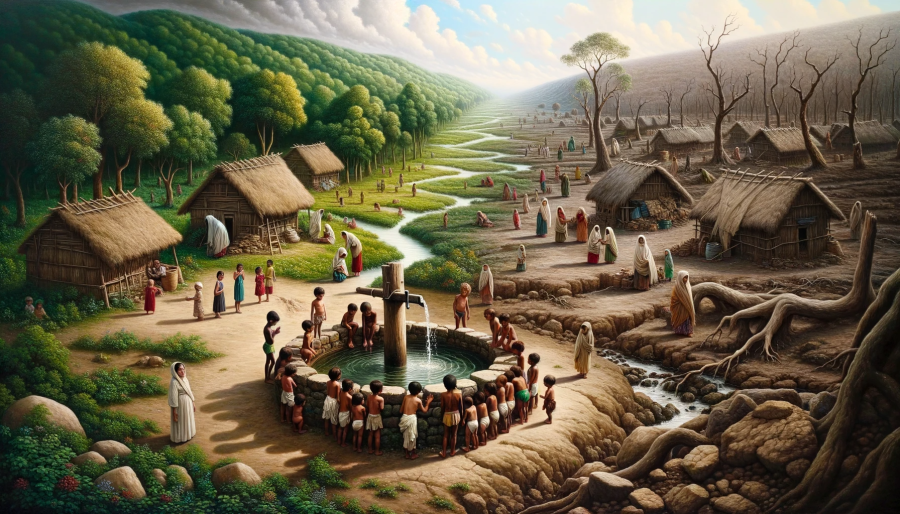
Health and sanitation are indispensable facets of a thriving society, heavily reliant on water quality.
The synergy between water conservation and improved health outcomes is a narrative of survival and wellness.
Clean water is crucial for proper sanitation, which in turn prevents the spread of diseases:
The provision of clean water is a fundamental requirement for maintaining proper sanitation.
Clean water is imperative for a multitude of sanitary practices including hand washing, cleaning, and waste disposal which are instrumental in preventing the spread of infectious diseases.
In settings where clean water is scarce, the risk of outbreaks of diseases such as cholera and diarrhea exponentially increases, highlighting the need for improved water management.
Clean Water: A Cornerstone of Healthcare and Public Health
Additionally, the availability of clean water in healthcare facilities is paramount to prevent healthcare-associated infections, ensuring the safety of both healthcare providers and patients.
The role of clean water in promoting hygiene and preventing the proliferation of waterborne diseases is an inextricable link between water conservation and public health.
Lack of clean water can lead to numerous water-borne diseases, affecting the quality of life and leading to mortality:
The absence of clean water is a precursor to a host of water-borne diseases.
These diseases, including cholera, dysentery, and typhoid, can have devastating effects on communities, particularly in vulnerable populations lacking the infrastructure for water treatment and healthcare.
Mortality rates can soar during outbreaks, and the quality of life deteriorates as individuals and families grapple with illness.
The prolonged impact extends to economic productivity and community well-being.
4. Energy and Resource Efficiency

The narrative of energy and resource efficiency unveils a scenario where water conservation is the protagonist.
It’s a tale of reduced energy consumption, minimized pollution, and optimized resource utilization.
By adopting water-saving technology and reducing our water footprint, we also minimize the energy required to process and deliver water.
Reducing water usage diminishes the energy required to process and deliver it, which in turn helps in reducing pollution and conserving fuel resources:
The interlink between water and energy is often dubbed as the “energy-water nexus.”
The process of treating, pumping, and delivering water to households and industries consumes a significant amount of energy.
Similarly, energy production itself, especially in thermal power plants, necessitates substantial water use.
By reducing water usage, the energy required for these processes is simultaneously decreased.
This cascading effect translates to lower greenhouse gas emissions, as less fossil fuel is burned to generate the energy associated with water services.
Water Conservation: Fueling Resource Efficiency
The conservation of water also paves the way for conserving other vital resources.
For instance, less water usage means less energy required for heating, pumping, and treating water, which in turn results in reduced demand for fuel resources such as coal, gas, and electricity.
This scenario paints a broader picture of resource efficiency, embodying a cyclical relationship where conserving one resource leads to the conservation of another.
Furthermore, the reduction in energy consumption and pollution contributes to a cleaner, healthier environment.
The lesser the pollution, the better the air and water quality, creating a more sustainable and livable habitat for all living organisms.
5. Economic Implications
![]()
The economic implications of water conservation extend beyond mere cost-saving.
It’s a discourse on fostering economic resilience, reducing expenditures, and promoting a sustainable financial landscape.
The economic benefits of water conservation in terms of reducing costs associated with water treatment and delivery:
• Water conservation has a direct impact on reducing the costs associated with water treatment and delivery.
When water usage is minimized, less energy and resources are required to treat, heat, and transport water to various sectors including residential, industrial, and agricultural domains.
This reduction in operational costs can translate to lower water bills for consumers and reduced expenditures for municipalities and businesses.
Fueling Economic Efficiency and Resilience
• On a macroeconomic level, efficient water use can lead to significant cost savings for municipal water treatment facilities.
By reducing the load on these facilities, the costs associated with water purification, pumping, and distribution are substantially lowered.
This, in turn, can free up financial resources that can be redirected to other critical infrastructure projects or community development initiatives.
• Furthermore, water conservation measures such as the adoption of water-efficient technologies and the implementation of water reuse and recycling programs can lead to long-term economic benefits.
Investments in water-efficient appliances and fixtures, though they may have upfront costs, yield long-term savings by reducing water and energy bills, promoting water efficiency
Sparking Jobs and Economic Activity
• The economic ripple effect of water conservation extends to job creation as well.
The design, installation, and maintenance of water-efficient systems and technologies create new job opportunities in the green technology sector.
Moreover, the money saved from reduced water and energy bills can stimulate economic activity as consumers and businesses have more disposable income to spend or invest.
Saving Water : A Pillar of Economic Resilience
• Additionally, in regions where water scarcity is a pressing issue, water conservation can be a tool for economic resilience.
By ensuring a reliable water supply through conservation measures, businesses, and agricultural operations are safeguarded against the economic risks associated with water shortages.
6. Environmental Sustainability

Environmental sustainability and water conservation are intertwined in a delicate dance.
This relationship underscores the imperative of water conservation in nurturing a harmonious environment.
The U.S. population has doubled over the past 50 years, while our thirst for water has tripled. With at least 40 states anticipating water shortages by 2024, the need to conserve water is critical. https://www.epa.gov/greeningepa/water-conservation-epa
Conserving water contributes to environmental sustainability, including preserving habitats and combating climate change:
• Water is a life-sustaining resource, forming the crux of various ecosystems. The conservation of water plays a pivotal role in preserving diverse habitats, be it wetlands, rivers, or lakes.
These ecosystems are home to a myriad of plant and animal species, and their well-being is heavily reliant on the availability and quality of water.
By conserving water, we aid in maintaining the ecological balance and ensuring the survival and flourishing of these habitats.
Water Conservation: A Weapon Against Climate Change
• Furthermore, water conservation is a potent tool in the fight against climate change.
The energy saved from reduced water heating, treatment, and distribution translates to fewer greenhouse gas emissions, which is instrumental in mitigating climate change.
Moreover, healthy water systems can act as carbon sinks, absorbing and storing carbon dioxide, which helps in reducing the overall carbon levels in the atmosphere.
Water Conservation: Shielding Supply Amid Climate Shifts
• Water conservation also helps in reducing the stress on existing water sources, which is crucial in the face of changing climate patterns.
As climate change alters precipitation patterns and increases the frequency and intensity of extreme weather events like droughts and floods, conserving water becomes even more essential to ensure a resilient and sustainable water supply.
Drought resistance is another benefit of water conservation, as it prepares communities for periods of water scarcity.
Conserving Water: Boosting Sustainability, Protecting Quality
• In addition, water conservation practices like water recycling and rainwater harvesting are part of sustainable water use that contributes to environmental sustainability.
These measures also help in reducing stormwater runoff, which can carry pollutants into water bodies, thereby protecting water quality.
7. Recreational and Aesthetic Value
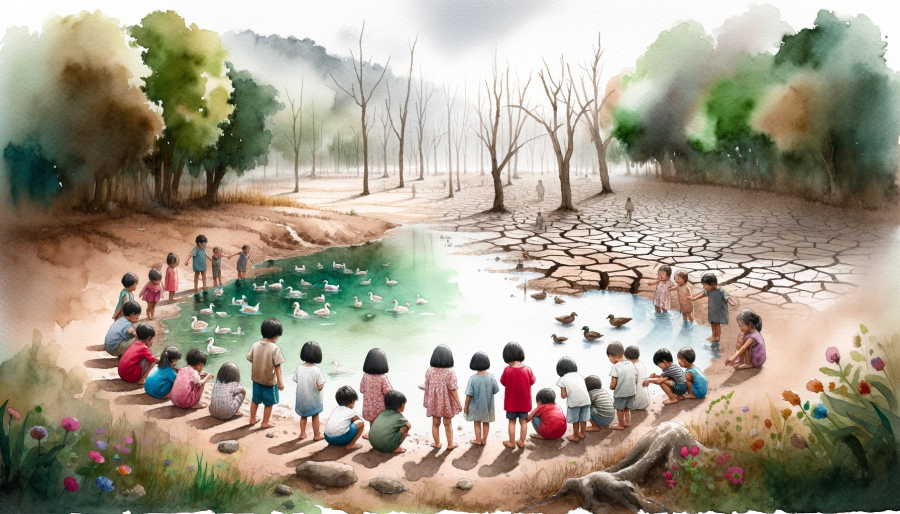
Recreational and aesthetic values of water are chapters in the book of water conservation that enrich our life experience.
They underscore the lifestyle and cultural enhancements that conserved water resources bring to communities.
Conserved water avails resources for recreational purposes, enhancing the aesthetic value of our surroundings:
Water bodies are not just essential resources; they are places of joy, recreation, and aesthetic appeal.
Lakes, rivers, and oceans are venues for numerous recreational activities such as swimming, boating, and fishing.
Parks with ponds and water features provide serene spots for relaxation and leisure.
Water conservation ensures that these recreational spaces remain vibrant and accessible, enriching the quality of life in communities.
Employing sustainable practices like using drought-tolerant plants and efficient irrigation systems can create visually appealing spaces while promoting water efficiency.
The aesthetic value of water is undeniable. The sight and sound of water can significantly enhance the beauty and appeal of a locale, be it a city with a river running through it or a community park with a fountain.
Well-maintained water bodies add to the aesthetic charm, promoting a sense of peace and connection with nature.
Moreover, properties near water bodies often have higher aesthetic and monetary value.
Water Conservation: Beautifying Spaces, Preserving Heritage
Water conservation helps maintain the beauty and usability of these natural and man-made water features by ensuring a reliable water supply.
It also aids in preserving the clarity and cleanliness of water, which in turn enhances the aesthetic appeal.
Besides, conserving water in urban landscapes by employing sustainable practices like using drought-tolerant plants and efficient irrigation systems can create visually appealing spaces while promoting water efficiency.
The ripple effect of water conservation extends to cultural values as well.
Many cultures revere water bodies as sacred or historically significant sites.
Conserving water helps in preserving the integrity and historical significance of such sites, thus contributing to cultural preservation.
8. Community and Global Initiatives
Community and global initiatives in water conservation are the torchbearers in the dark alley of water scarcity.
They epitomize collective action and the global camaraderie necessary to navigate the water conservation journey.
Various community and global initiatives promoting water conservation
Across the globe, numerous initiatives, both at community and international levels, are making strides in promoting water conservation.
These initiatives range from local water-saving campaigns, and educational programs in schools and communities, to global projects aimed at improving water management practices and policies.
On a community level, local authorities, non-profit organizations, and citizen groups often spearhead water conservation campaigns.
These campaigns may include water-saving challenges, distribution of water-efficient fixtures, and educational workshops on water conservation techniques.
Participating in or supporting these local initiatives can be a significant step towards fostering a culture of water conservation within communities.
Global Unity in Water Conservation: Act Locally, Impact Globally
At a global scale, international organizations, governmental bodies, and collaborations between countries are driving water conservation efforts forward.
For instance, the United Nations’ Sustainable Development Goal 6 is a testament to global efforts towards sustainable water management.
Other global initiatives focus on improving water governance, promoting water-efficient technologies, and advocating for sustainable water use in industries.
Readers can get involved in these initiatives in various ways. They can volunteer their time and skills to local water conservation projects, donate to organizations working on water issues, or advocate for water-saving policies at the community or national level.
Additionally, readers can take the initiative to educate themselves and others about water conservation and implement water-saving practices in their homes and workplaces.
9. Practical Tips for Water Conservation

Practical tips for water conservation are the stepping stones towards a water-efficient lifestyle.
They empower individuals and communities with actionable strategies to contribute to the larger cause of water conservation.
-
Practical tips and methods for individuals and communities to conserve water:
-
For Individuals:
- Check for Leaks: Regularly checking for and fixing leaks in taps, pipes, and toilets can save a significant amount of water.
- Install Water-Saving Fixtures: Use low-flow showerheads, faucet aerators, and dual-flush toilets to reduce water usage.
- Collect Rainwater: Collecting rainwater for outdoor use, such as watering plants, can significantly conserve water.
- Mindful Water Usage: Practice turning off the tap while brushing teeth, washing hands, or doing dishes.
- Use a Broom, Not a Hose: Clean driveways, sidewalks, and steps with a broom instead of a hose to save water outside.
-
For Communities:
- Community Awareness Programs: Organize water conservation awareness programs to educate community members on the importance of water conservation and provide practical tips.
- Water-Saving Challenges: Host challenges to encourage community members to reduce water usage and reward those who achieve notable reductions.
- Invest in Water-Saving Technology: Community-wide investments in water-saving technologies like efficient irrigation systems and wastewater recycling facilities can make a significant impact.
- Promote Drought-Tolerant Landscaping: Encourage community members to adopt drought-tolerant landscaping techniques that require less watering.
- Establish Water Conservation Policies: Work with local authorities to establish and enforce water conservation policies, such as watering restrictions during droughts.
-
10. Understanding Water Consumption: A Closer Look
Gallons of Water in Daily Use:
Water is an indispensable part of our daily lives, yet its consumption varies significantly across different regions.
In the United States, an individual uses an average of about 80-100 gallons of water per day.
This figure starkly contrasts with the daily per capita water usage in many other parts of the world, where the numbers can be substantially lower due to various factors including availability and infrastructure.
One of the significant contributors to water consumption in households is the washing machine.
A traditional top-loading washing machine can use about 41 gallons of water per load.
In comparison, a front-loading washing machine, which is considered more water-efficient, uses about 28 gallons per load.
Other activities such as taking a bath, flushing the toilet, and even turning on the dishwasher also contribute to the daily water footprint.
The difference in water consumption rates often mirrors the level of awareness, the efficiency of water-using appliances, and the effectiveness of water conservation policies in place.
By understanding the quantum of water used in everyday activities and employing water-efficient appliances, individuals can play a crucial part in reducing water consumption, paving the way for a more sustainable and water-secure future.
The Cost of Water Waste:
 The repercussions of water waste are far-reaching, impacting both economic and environmental domains.
The repercussions of water waste are far-reaching, impacting both economic and environmental domains.
Economically, water waste leads to higher costs in water treatment and delivery.
For instance, the cost of water has been rising in the United States, and water waste only exacerbates the financial burden on both individuals and the community at large.
Moreover, the process of treating and delivering clean water consumes a considerable amount of energy, which in turn contributes to higher utility bills.
Environmentally, water waste puts a strain on the already limited natural resources.
The excessive withdrawal of fresh water from natural sources leads to a depletion of surface water levels in lakes, rivers, and streams.
This depletion adversely affects aquatic life, disrupts the ecosystems, and can lead to a scarcity of water supplies over time.
Additionally, the excessive use of groundwater can lead to a decline in groundwater levels, making it a concerning issue in arid and semi-arid regions.
The environmental cost also extends to the loss of habitat for many aquatic and wetland species.
Moreover, water pollution is often exacerbated by higher water waste, as more contaminants are discharged into water bodies.
Addressing water waste by adopting water-efficient practices and technologies, and promoting water conservation awareness, is pivotal in mitigating these economic and environmental challenges.
It’s a step towards ensuring the sustainable management of water resources, which is essential for the well-being of both the economy and the environment.
11. Practical Steps Towards Reduced Water Consumption
![]()
Embarking on a journey towards reduced water consumption necessitates a blend of technological adaptation and behavioral modification.
These steps not only contribute to water conservation but also lead to substantial savings on water bills, making it a win-win scenario.
Adopting Water-Saving Appliances:
Water-saving appliances are designed to deliver the same or even better functionality while using less water.
For instance, a low-flow showerhead can drastically reduce the amount of water used in every shower, without compromising the shower experience.
It’s a simple switch that can save thousands of gallons of water annually in a typical household.
Fixing leaky faucets is another straightforward yet impactful step.
A single drip every second can waste over 3,000 gallons of water per year, which is enough water to take more than 180 showers.
Addressing such leaks promptly can prevent a significant amount of water waste.
When it comes to washing machines, running full loads is a smart practice.
It maximizes the efficiency of each water usage cycle, as opposed to running several smaller loads which would use more water cumulatively.
Modern washing machines also come with water-efficient cycles that can be leveraged to reduce water consumption further.
Employing water meters to monitor water consumption is a prudent approach.
A water meter provides precise data on water usage, helping to identify any abnormal consumption that might indicate leaks or overuse.
By regularly monitoring water consumption, individuals can better understand their water usage patterns and take steps to reduce unnecessary use.
Embracing Behavioral Changes:
Simple behavioral changes can go a long way in reducing water consumption.
For instance, cutting down shower time by just a few minutes can save dozens of gallons of water over the week.
It’s a small change that, when adopted widely, can have a significant impact.
Checking toilet tanks for leaks is another important step. A silent leak in the toilet can waste up to 7,000 gallons of water per month.
By simply placing a few drops of food coloring in the tank and observing if it seeps into the bowl, individuals can easily check for leaks.
Avoiding the use of garbage disposals can also contribute to water savings.
Garbage disposals require a considerable amount of water to operate effectively.
Composting kitchen waste instead of using the garbage disposal is an environmentally friendly alternative that also saves water.
Each of these steps, whether it involves adopting water-saving appliances or making small behavioral changes, contributes towards a culture of water conservation.
When embraced collectively, these steps can lead to a significant reduction in water consumption, promoting a sustainable and water-efficient lifestyle.
12. Water Conservation in Your Backyard

Your backyard is a canvas where the art of water conservation can be beautifully illustrated.
With mindful gardening and landscaping practices, it’s possible to create a serene and aesthetically pleasing outdoor space that is also water-efficient.
These practices not only conserve a significant amount of water but also reduce maintenance while promoting a healthy local ecosystem.
Sustainable Gardening Practices:
Sustainable gardening practices are fundamental to water conservation in your backyard. Here are a few impactful strategies:
- Native Plants: Native plants are adapted to the local climate and soil conditions, which make them exceptionally resilient and require far less water than non-native species. By choosing native plants for your garden, you’re aligning with the natural ecosystem, which significantly reduces the need for extra watering and care.
- Drip Irrigation Systems: Drip irrigation is a highly efficient watering system that delivers water directly to the base of each plant, minimizing evaporation and runoff. By using a drip irrigation system, you can ensure that your plants receive the precise amount of water they need, reducing waste and promoting healthier plant growth.
- Reclaimed Water: Utilizing reclaimed water, or greywater, from your home is a resourceful way of watering your garden. This includes water from showers, washing machines, and sinks that can be rerouted to irrigate your garden, reducing the demand on freshwater supplies.
- Timing of Watering: Watering your plants during the early morning or late afternoon reduces evaporation loss, ensuring that more water reaches the roots. It’s a simple yet effective way to conserve water in your garden.
Artificial Turf and Other Alternatives:
For areas of your backyard traditionally covered in thirsty lawns, considering alternative landscaping can lead to substantial water savings.
- Artificial Turf: Artificial turf is a waterless alternative to traditional grass lawns. It provides a green, lush look year-round without requiring a drop of water. Additionally, artificial turf eliminates the need for mowing, fertilizing, and other maintenance associated with natural grass, saving both time and resources.
- Drought-Tolerant Landscaping: Drought-tolerant landscaping, also known as xeriscaping, incorporates plants and design principles that minimize water use. This includes using drought-resistant plants, mulching to retain soil moisture, and designing areas to capture rainwater.
Adopting these sustainable gardening practices and landscaping alternatives is a significant step toward reducing outdoor water use.
Not only do they contribute to water conservation, but they also create a resilient, low-maintenance backyard that reflects a commitment to environmental sustainability.
By integrating these practices, you’re embracing a water-wise approach to gardening and contributing to a broader culture of conservation.
13. Agricultural Water Use and Conservation

Agriculture is a sector where water is a critical component, influencing not just the yield but the very possibility of cultivation.
The importance of water conservation in agriculture cannot be overstated as it is directly tied to food security, livelihoods, and economic stability.
Efficient irrigation practices and adaptive strategies to weather patterns are among the cornerstones of water conservation in this sector.
Efficient Irrigation:
Efficient irrigation is pivotal in maximizing water use efficiency in agricultural landscapes.
It plays a strategic role in ensuring that crops receive adequate water while minimizing wastage. Here are some facets of efficient irrigation:
- Advanced Irrigation Systems: Upgrading to more efficient irrigation systems like drip or micro-spray irrigation can significantly reduce water consumption. These systems deliver water directly to the plant roots, minimizing evaporation and runoff losses.
- Irrigation Scheduling: Employing smart irrigation scheduling based on soil moisture levels, weather forecasts, and plant water needs can ensure water is only applied when and where it’s needed. This precision in irrigation scheduling can lead to substantial water savings.
- Irrigation Technology: Leveraging technology, such as soil moisture sensors and automated irrigation controllers, can optimize irrigation efficiency. These technologies can provide real-time data and automate watering schedules to avoid over-irrigation and conserve water.
- Water Recycling and Reuse: Implementing systems to capture, treat, and reuse agricultural runoff can provide a sustainable water source for irrigation, reducing the demand on freshwater resources.
Weather Patterns and Food Production:
The intricate relationship between weather patterns and agriculture underscores the significance of water conservation in ensuring food security:
- Impact of Droughts and Floods: Extreme weather events like droughts and floods can severely impact water availability for agriculture. Droughts can lead to water shortages, affecting crop yields, while floods can damage irrigation infrastructure and contaminate water sources.
- Climate Resilient Farming Practices: Adopting climate-resilient farming practices, such as drought-tolerant crop varieties, rainwater harvesting, and water storage solutions, can help mitigate the impacts of changing weather patterns on water resources.
- Food Shortages: Water scarcity, exacerbated by erratic weather patterns, can lead to reduced agricultural productivity and potential food shortages. Ensuring efficient water use in agriculture is crucial to safeguard against food shortages and maintain food security.
- Policy and Planning: Comprehensive water management policies and planning at the regional and national levels can help mitigate the risks associated with changing weather patterns. This includes investing in resilient agricultural water infrastructure and promoting water conservation practices among farmers.
Through a combination of efficient irrigation practices and adaptive strategies to changing weather patterns, the agricultural sector can significantly contribute to water conservation.
These measures not only safeguard against the adverse impacts of water scarcity but also pave the way for a sustainable and resilient agricultural sector that can meet the growing demand for food amidst a changing climate.
14. Industrial Water Conservation

Industries are among the significant consumers of water, utilizing it for a plethora of processes including cooling, cleaning, and manufacturing.
The extent of industrial water use, coupled with the potential for pollution, accentuates the necessity for water conservation and sustainable management practices within this sector.
By adopting water conservation plans and utilizing reclaimed water, industries can play a pivotal role in alleviating water scarcity and promoting environmental sustainability.
Water Use in Industrial Processes:
The industrial sector’s water footprint is substantial, often leading to notable water consumption and pollution. Here are some insights into water use in industrial processes and how conservation plans can mitigate these issues:
- Water Consumption: Industries consume vast amounts of water for various processes such as cooling systems, boiler feedwater, and product processing. The magnitude of water used can strain local water supplies, especially in water-scarce regions.
- Water Pollution: Industrial activities can lead to water pollution if not properly managed. The discharge of untreated industrial effluents into water bodies can contaminate water supplies and harm aquatic ecosystems.
- Water Conservation Plans: Implementing water conservation plans within the industrial sector is crucial for reducing water consumption and minimizing pollution. These plans could encompass:
- Water Audits: Conducting water audits to identify areas of excessive water use and leakages.
- Recycling and Reuse: Establishing systems for recycling and reusing water within industrial processes.
- Waste Management: Adopting waste management practices to treat industrial effluents before discharge, thereby mitigating water pollution.
- Technology Adoption: Utilizing water-efficient technologies and process optimizations to reduce water consumption.
- Engagement and Training: Engaging employees and stakeholders on the importance of water conservation and providing training on water-saving practices can foster a culture of conservation within the industry.
Reclaimed Water in Industries:
Utilizing reclaimed water is a pragmatic approach to reducing freshwater demand in the industrial sector.
Here are some points on how reclaimed water can be incorporated into industrial processes:
- Source of Alternative Water Supply: Reclaimed water serves as an alternative water supply, alleviating the pressure on freshwater resources. It’s particularly beneficial in regions grappling with water scarcity.
- Applications: Industries can use reclaimed water for various non-potable purposes including cooling, boiler feedwater, and even process water in certain cases.
- Cost Efficiency: Utilizing reclaimed water can be cost-effective in the long run as it reduces the dependency on external water supplies and can lower water treatment costs.
- Regulatory Compliance: Employing reclaimed water can help industries comply with local water management regulations and contribute to regional water conservation goals.
- Public-Private Partnerships: Collaborative initiatives between public authorities and industries can facilitate the infrastructure and regulatory framework necessary for reclaimed water use.
By integrating water conservation plans and embracing the use of reclaimed water, industries can significantly contribute towards water conservation, setting a precedent for sustainable industrial practices.
Through collective efforts within the industrial sector, we inch closer to a scenario of efficient water use that bodes well for both the economy and the environment.
15. The Future of Water Conservation
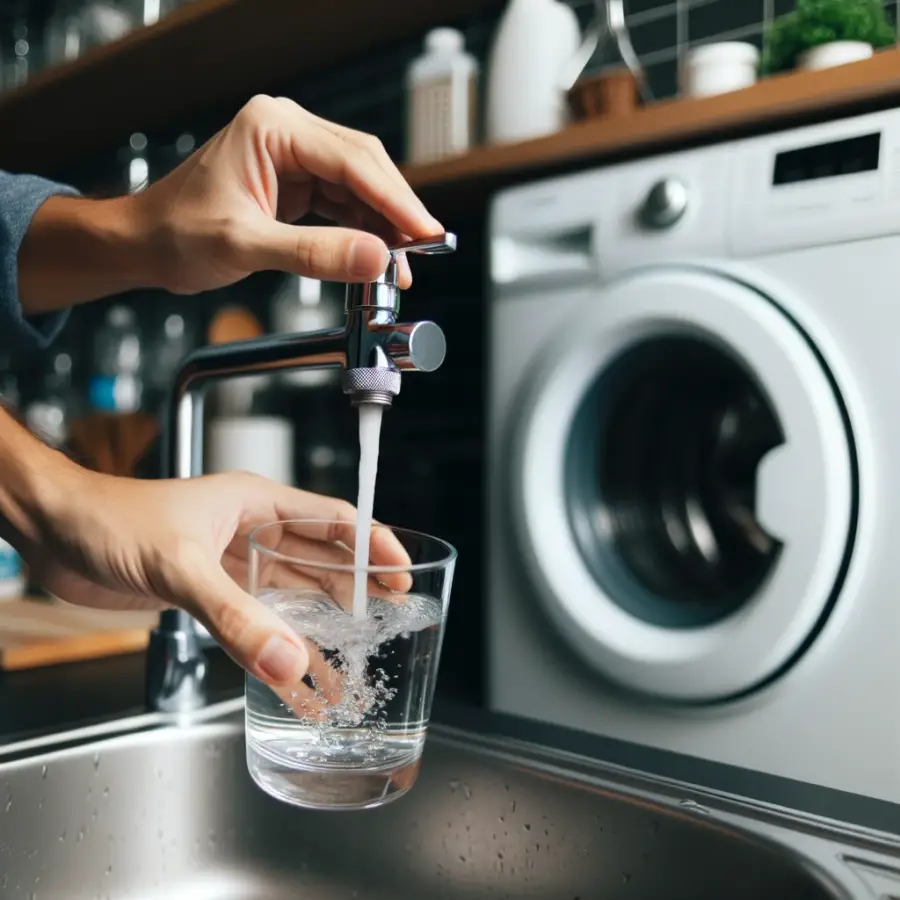
Water conservation is not merely a present-day endeavor but a long-term commitment toward securing a sustainable water future.
The scenarios of escalating population growth and the burgeoning demand for safe drinking water underscore the urgency of proactive water conservation measures.
The trajectory of water conservation is intertwined with global health, economic vitality, and environmental sustainability.
As we navigate through the intricacies of global water risk and human health, the narrative of water conservation emerges as a cornerstone for fostering a resilient and water-secure future.
Addressing the Growing Demand:
The nexus between population growth and water demand is a significant facet of the global water narrative.
Here’s a closer look at how water conservation addresses the growing demand for safe drinking water:
- Population Growth: The burgeoning global population is synonymous with escalating demand for water. As more individuals rely on finite water resources, the strain on these resources intensifies, thus amplifying the importance of water conservation.
- Increasing Demand for Safe Drinking Water: Access to safe drinking water is a fundamental human right and a cornerstone for public health. The growing demand accentuates the need for efficient water management practices to ensure a reliable supply of clean water.
- Water Conservation as a Means of Supply Security: Water conservation strategies, both on individual and communal levels, are instrumental in curbing excessive water use and promoting efficient use of available water resources. This conservation ethos aims at ensuring that adequate water is available to meet the needs of the growing global population in the coming years.
- Technological Innovations: The advent of water-saving technologies and the promotion of water-efficient practices are crucial for navigating the rising demand for water. Innovations in water treatment, recycling, and efficient usage can significantly contribute to water conservation efforts.
Global Water Risk and Human Health:
The global water risk narrative is a reflection of the intrinsic link between water scarcity, human health, and societal well-being.
Here’s an exploration of how water conservation plays a pivotal role in mitigating water risks and fostering human health:
- Water Scarcity as a Health Risk: Water scarcity exacerbates the risk of waterborne diseases, malnutrition, and other health issues. Inadequate access to clean water and sanitation facilities can lead to the proliferation of waterborne diseases and other health hazards.
- Water Conservation as a Health Promotion Tool: By ensuring enough water through conservation measures, the risks associated with water scarcity can be significantly mitigated. Water conservation promotes access to clean water, which in turn fosters improved hygiene and reduces the incidence of waterborne diseases.
- Community Resilience: Communities endowed with robust water conservation practices are better positioned to withstand the adversities of water scarcity. These practices contribute to building a resilient community capable of navigating the health and economic challenges posed by water scarcity.
- Policy Framework and Global Cooperation: Establishing a conducive policy framework and fostering global cooperation are essential for advancing water conservation goals. Through collaborative efforts, global standards, and shared knowledge, the journey toward water conservation and a healthier future can be significantly bolstered.
The endeavor towards water conservation is a collective journey.
By adopting water-saving practices, advocating for sustainable water policies, and supporting technological innovations, we pave the way for a water-secure and healthier future.
Through these concerted efforts, the narrative of water conservation continues to evolve, anchoring itself firmly in the global discourse on sustainability and public health.
16. Community Involvement and Education

The path toward successful water conservation is paved with informed decisions and collective action.
Community involvement and education are the linchpins of fostering a culture of water conservation.
By engaging communities and providing pragmatic water-saving tips, the journey towards reducing water waste and promoting water efficiency becomes a communal endeavor.
The synthesis of individual actions and community initiatives can significantly drive down water consumption, contribute to safeguarding water resources, and cultivate a sustainable living ethos.
Water-Saving Tips:
Empowering individuals with practical water-saving tips is a cornerstone for promoting indoor water efficiency.
Here’s a curated list of water-saving tips that can be seamlessly integrated into daily lives, making a profound impact over time:
- Monitor Water Usage: Install a water meter to keep track of daily water usage. Identifying patterns can help in implementing strategies to reduce consumption.
- Fix Leaks Promptly: A small leak can waste a substantial amount of water over time. Regularly check for and fix leaks in taps, pipes, and toilet tanks.
- Use Water-Saving Appliances: Opt for appliances with better water efficiency ratings. For instance, using a low-flow showerhead can significantly reduce water use.
- Practice Mindful Water Usage: Small actions like turning off the tap while brushing teeth or washing hands, and using a broom instead of a hose to clean driveways can make a big difference.
- Run Full Loads: Ensure washing machines and dishwashers are fully loaded before running them to maximize water efficiency.
- Collect Rainwater: Harvest rainwater for outdoor use such as watering plants.
These simple yet effective water-saving tips are a testament to how every drop counts and how the average person can play a significant role in conserving water in their daily lives.
Community Water Conservation Initiatives:
Community-driven initiatives are instrumental in amplifying the impact of water conservation efforts.
A community well-versed in water conservation strategies is a formidable force against water wastage.
Here’s a glimpse into how community initiatives can propel water conservation:
- Water Conservation Workshops: Hosting workshops to educate community members on the importance of water conservation and providing practical tips can foster a culture of mindful water usage.
- Distribution of Water-Saving Appliances: Local authorities or water companies can distribute water-saving appliances like low-flow showerheads or faucet aerators to community members, thus promoting water efficiency.
- Community Challenges: Initiating water-saving challenges can ignite a communal spirit of conservation. Rewarding individuals or neighborhoods for notable reductions in water usage can encourage more people to participate.
- Public Awareness Campaigns: Utilizing various platforms to disseminate water-saving tips and information about local water conservation initiatives can reach a broader audience.
- Local Water Company Initiatives: Water companies can play a crucial role by offering educational resources, conducting water audits, and promoting water-saving technologies.
- School Education Programs: Integrating water conservation education in school curriculums can instill water-saving habits in children from a young age.
These community-centered initiatives not only contribute to reducing water consumption but also foster a sense of communal responsibility toward safeguarding this essential resource.
Through education and collaborative action, communities can significantly contribute to the broader water conservation narrative, ensuring a water-secure future for all.
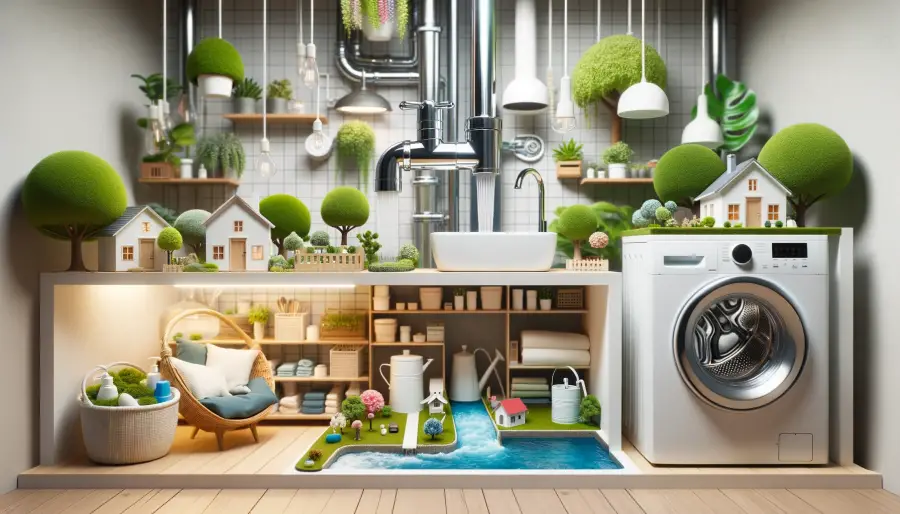
Conclusion
The journey towards water conservation is a collective endeavor.
Implementing mindful practices, supporting community initiatives, and advocating for sustainable policies are steps in the right direction.
Through these efforts, we can ensure a secure water future, promoting a healthier and more sustainable living environment for all.
Nurturing a Culture of Conservation
Water conservation is a pressing endeavor that resonates through the veils of individual actions, community initiatives, and global strategies.
As elucidated throughout this post, the imperative to conserve water stems from a confluence of critical concerns encompassing public health, economic resilience, environmental sustainability, and cultural preservation.
Addressing Population Growth and Climate Change
With the looming shadow of escalating population growth and changing climate patterns, the urgency to adopt water-saving practices and foster a culture of conservation is palpably clear.
This expedition towards a water-efficient lifestyle is not only a proactive response to the immediate challenges of water scarcity but a visionary leap toward ensuring a reliable water supply for future generations.
Embracing Collective Efforts
By embarking on this collective journey of education, awareness, and actionable strategies, we sow the seeds of a sustainable, water-secure future.
Engaging in local water conservation initiatives, employing water-efficient technologies, and imbibing water-saving habits in our daily routines are pragmatic steps each one of us can take.
Sketching a Sustainable Blueprint
Together, these concerted efforts contribute to a global tapestry of solutions aimed at preserving this indispensable resource.
As we navigate the continuum of water conservation, the ripple effect of our actions today sketches a blueprint of a sustainable, thriving, and water-abundant world for the generations to come.
Read more about water efficient landscaping ideas


